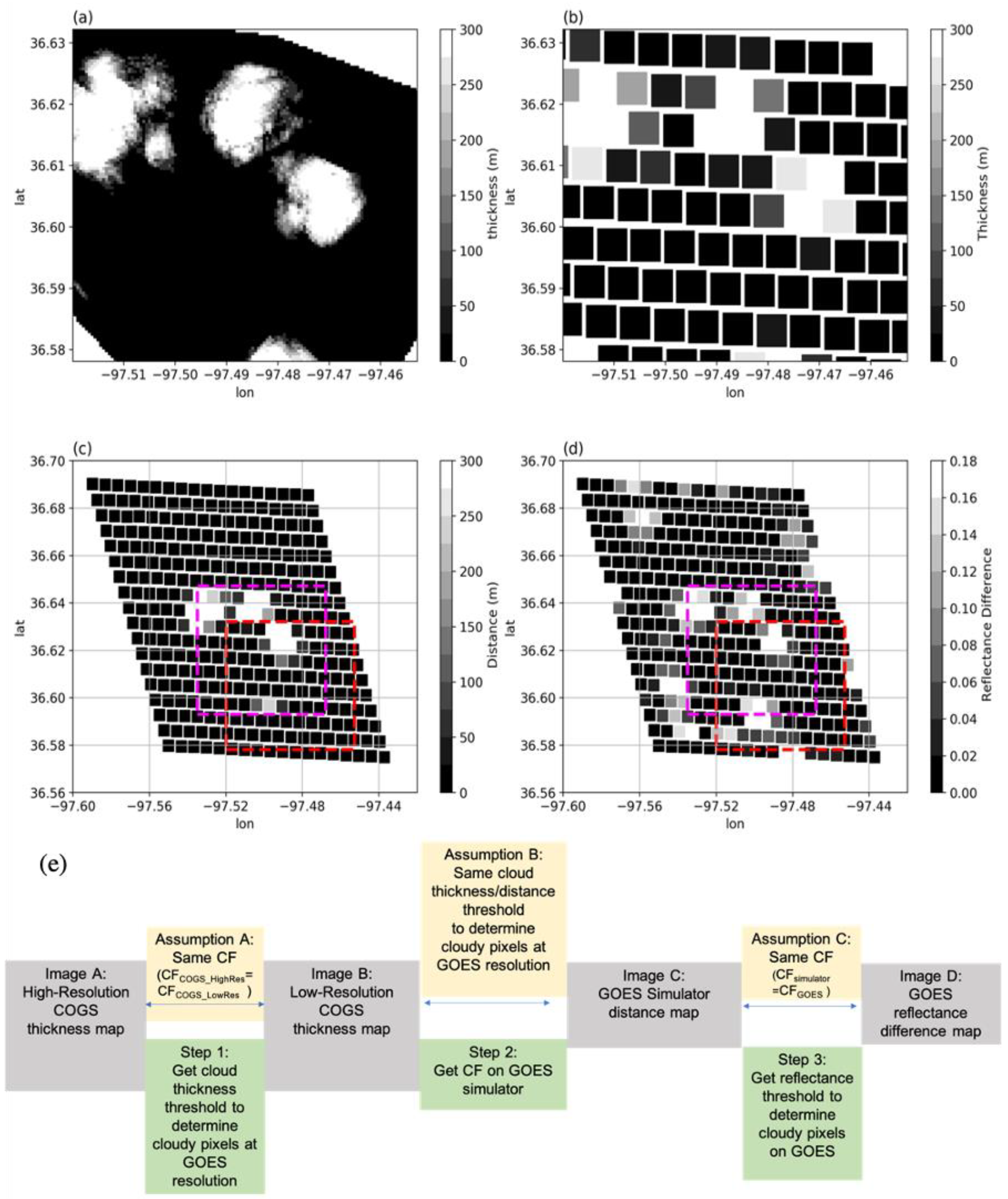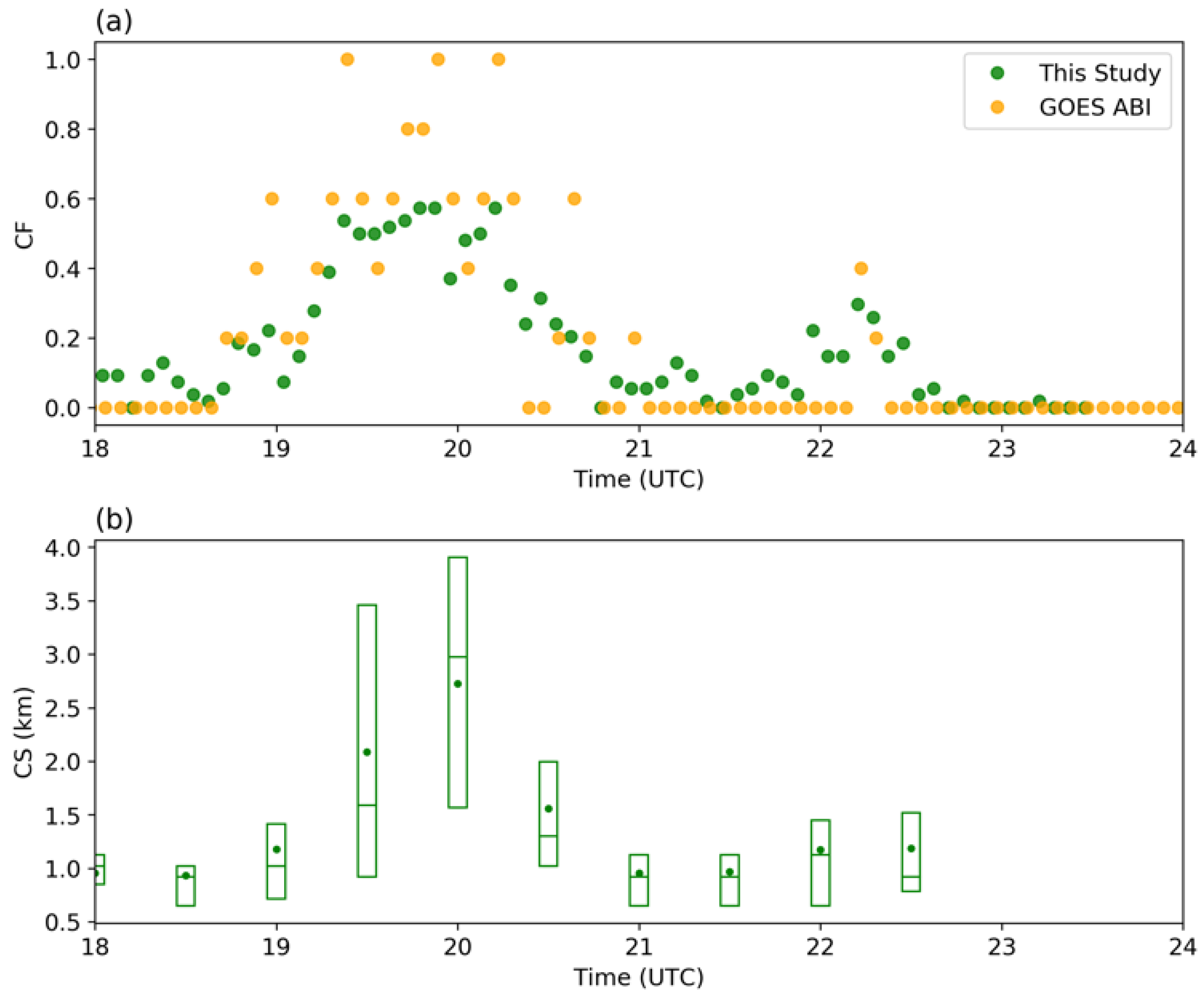Continental shallow cumulus cloud detection using GOES-16 satellite and ground-based stereo cameras
Submitter
Zhang, Yunyan — Lawrence Livermore National Laboratory
Area of research
Cloud Processes
Journal Reference
Science
To advance our understanding of the formation of continental shallow cumulus clouds (ShCu) and their coupling with the underlying surface, continuous ShCu observations are greatly needed, especially those that can resolve the daytime variation in cloud life cycles and cloud sizes over vast areas with heterogenous land types. However, such data are scarce due to the limited resolution and/or spatial coverage of instruments. Recently, we developed a new ShCu detection method by taking advantage of two state-of-the-art instruments: (1) the ground-based stereo cameras with accurate ShCu cloud boundary detection at the DOE ARM SGP site, and (2) the Advanced Baseline Imager (ABI) onboard the Geostationary Operational Environmental Satellite (GOES) with greatly improved spatial and temporal resolutions.
Impact
Detection of the low-level, kilometer-scale, and short-lived ShCu during daytime is a missing feature in the current GOES cloud mask data product. This study makes a first attempt to directly identify ShCu using GOES-16 reflectance data and the newly developed method is validated by the ground-based ARM SGP stereo camera data. This new method bridges the observational gap in detecting the daytime evolution of ShCu over a large area around the SGP region and has great potential to be applied to other regions with prevailing ShCu populations.
Summary
Summertime continental shallow cumulus clouds (ShCu) are detected using GOES-16 reflectance data, with cross-validation by observations from ground-based stereo cameras at the ARM SGP site. A ShCu cloudy pixel is identified when the GOES reflectance exceeds the clear-sky surface reflectance by a reflectance detection threshold of ShCu, ΔR. We first construct diurnally varying clear-sky surface reflectance maps and then estimate the ∆R. A GOES simulator is designed, projecting the clouds reconstructed by stereo cameras towards the surface along the satellite’s slanted viewing direction. The dynamic ShCu detection threshold ΔR is determined by making the GOES cloud fraction (CF) equal to the CF from the GOES simulator. Although there are temporal variabilities in ΔR, cloud fractions and cloud size distributions can be well reproduced using a constant ΔR value of 0.045 when compared with the stereo camera data. The new data set of ShCu based on this method can be used to facilitate further studies on ShCu development and transition to deep convective clouds over heterogenous land surface.



